Callistemon viminalis 'Little John' may very well be the hottest plant you've never heard of. Those of you in the subtropics may be familiar with bottlebrushes as showy trees and large shrubs, but this dwarf variety is small enough for anyone to use in containers. Those in zones 9 to 11 can take advantage of its small size — 2 to 3 feet tall and wide — by using it for ground covers and foundation plantings. It's drought tolerant, heat tolerant and nearly maintenance free. There's no need for pruning, since dwarf bottlebrush has blue-green leaves and crimson-stamened flowers packed tightly on short branches.
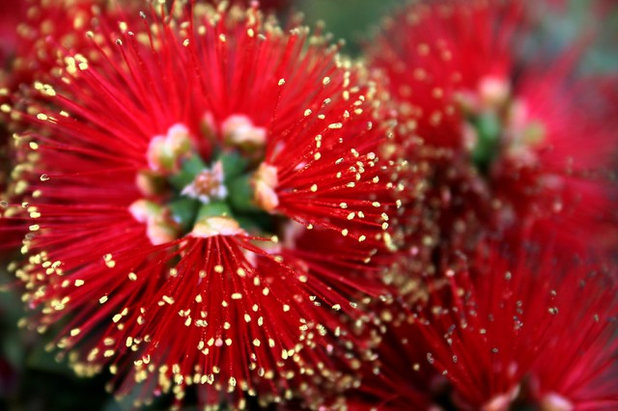 Botanical name: Callistemon viminalis
Botanical name: Callistemon viminalis 'Little John'
Common names: Dwarf bottlebrush, Little John bottlebrush
Where it will grow: Hardy to 15 degrees with protection (USDA zones 9 to 11; find your zone); grow in containers elsewhere
Water requirement: Low once established
Light requirement: Full sun but tolerates some shade
Mature size: 2 to 3 feet tall and wide
Benefits and tolerances: Drought tolerant; provides shelter for wildlife; attracts pollinators; tolerates urban conditions
Seasonal interest: Evergreen; sporadic blooms year-round with a peak in spring
When to plant: Plant from nursery pots in fall
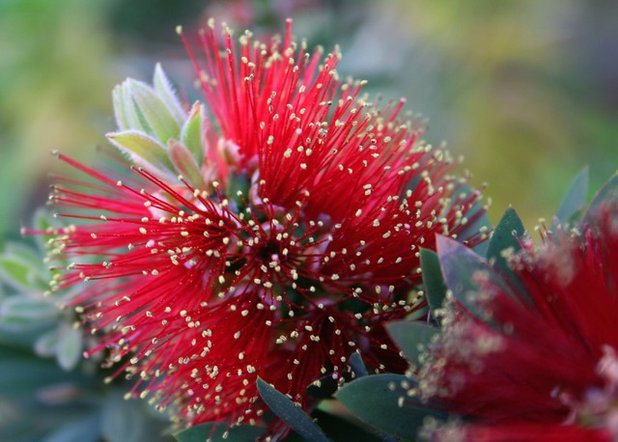 How to use it.
How to use it. Use dwarf bottlebrush to attract hummingbirds and other pollinators, to add interest to herb gardens alongside the muted hues of lavender and rosemary, or as an edging to line garden beds and paths. The softly textured leaves are shown off to best effect when multiple plants are grown together, but since this plant's cost ($20 to $30 each) can be prohibitive, consider popping them into flowerbeds one at a time as money allows. Just consider yourself warned; if you plant just one, you're likely to fall in love and plant more before long.
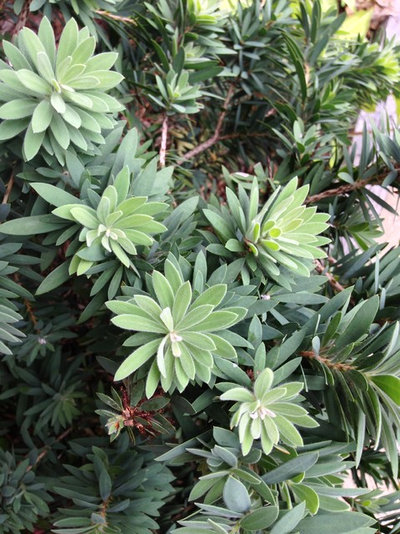
The soft, cool hues of dwarf bottlebrush's leaves make waiting for the flowers a lot easier, and it is a worthwhile addition to the garden on merit of its foliage alone. Its velvety texture beckons all passersby to absentmindedly brush against it like one would a family pet, so be sure to plant it within arm's reach.
In zones 9 to 11, dwarf bottlebrush retains its leaves and can be put to use in the landscape as a permanent fixture, since its slow growth and compact habit make it small enough to use as a ground cover or below windows in foundation plantings. In the event of especially hard freezes, the small size of dwarf bottlebrush makes it easy to cover up with blankets or frost cloth.
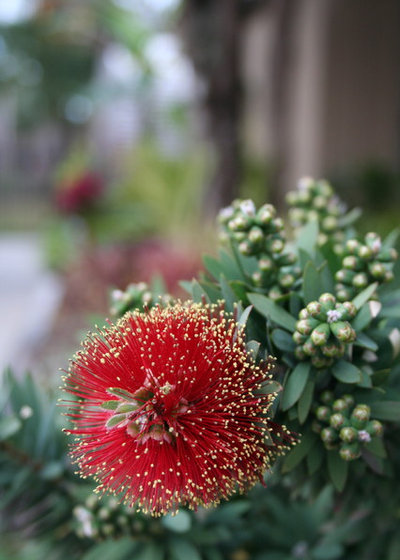
If you live where it gets colder than 15 degrees Fahrenheit, you can still grow
Callistemon 'Little John' in containers. Its small size will allow you to keep it potted for years without its outgrowing the space, and it adapts easily to spending the winter as a houseplant.
This plant is drought tolerant once established, but I recommend repotting nursery-grown plants into larger pots and allowing them to put out deeper roots first. Plant them singly in pots or use them in a grouping by combining them with large-leaved plants to provide some contrast. A grouping of three large ceramic urns planted with dwarf bottlebrushes would make an excellent low-maintenance display and bring the blooms and velvety leaves closer to eye level.
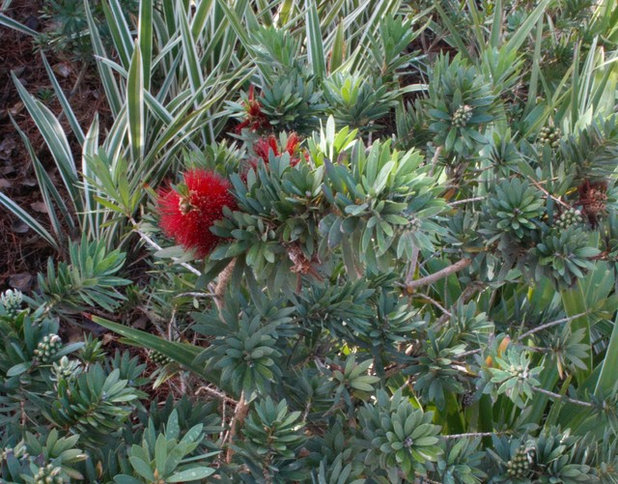 Planting notes. Callistemon
Planting notes. Callistemon 'Little John' is quite resilient, handling anything from temporarily soggy soil to drought. It requires little to no irrigation once established, making it appropriate for xeriscaping alongside natives and even commercial sites such as parking lots or medians. It likely benefits from fertilizer but doesn't seem to complain either way, and happily continues blooming through utter neglect.
Be advised that while this plant is drought tolerant after being in the ground for a few months, it
will need irrigation after planting to help the roots establish. It can be planted at any time of year, but planting a container-grown plant in fall will allow it to establish more easily — this means that it will be ready to produce loads of flowers in spring. This photo demonstrates how the plants tend to bloom a little throughout the year, so you can still expect to see some blooms every now and then.





